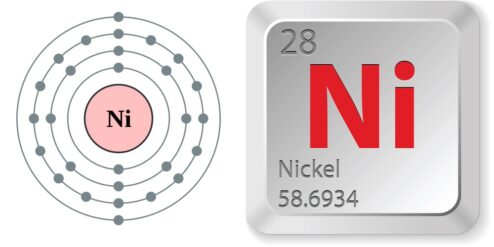Introduzione: The question of whether beans are high in nickel is one that has been asked by many health-conscious individuals. Nickel, a trace mineral, is naturally present in the environment and can be found in varying amounts in many foods. However, excessive intake can lead to health problems. This article aims to provide a comprehensive understanding of the nickel content in foods, specifically in beans, and the health implications of high nickel consumption.
Understanding the Nickel Content in Foods
Nickel is a trace mineral found in the earth’s crust and is present in our food chain. It enters the food chain through soil and water, and its concentration in food depends on the nickel content of the soil where the food is grown. Foods like grains, vegetables, fruits, and beans can contain varying amounts of nickel. The nickel content in food can also be influenced by cooking methods and the type of cookware used. For instance, stainless steel cookware can leach nickel into food, increasing its nickel content.
The Relationship Between Beans and Nickel
Beans, like many other plant-based foods, can contain nickel. The amount of nickel in beans can vary depending on the type of bean and the soil in which it was grown. Certain types of beans, such as soybeans, are known to accumulate more nickel than others. However, it’s important to note that the nickel content in beans is generally lower compared to some other foods like chocolate, nuts, and certain types of fish and shellfish.
How to Measure Nickel Levels in Beans
The measurement of nickel levels in beans is typically done in a laboratory setting using sophisticated equipment. One common method is atomic absorption spectrometry, which involves the use of a spectrometer to measure the amount of light absorbed by a sample. This technique is highly sensitive and accurate, allowing for precise measurements of trace elements like nickel. Another method is inductively coupled plasma mass spectrometry (ICP-MS), which is also highly accurate and can measure multiple elements simultaneously.
Health Implications of High Nickel Consumption
While nickel is a trace mineral and is present in many foods, excessive intake can lead to health problems. High levels of nickel consumption can cause nickel allergy, a condition characterized by skin rashes and itching. In severe cases, it can lead to systemic nickel allergy syndrome (SNAS), which can cause symptoms like headache, fatigue, nausea, and respiratory problems. Long-term exposure to high levels of nickel has also been linked to increased risk of lung and nasal cancer.
Strategies for Reducing Nickel Intake from Beans
There are several strategies for reducing nickel intake from beans. One is to choose beans grown in low-nickel soils. Another is to avoid cooking beans in stainless steel cookware, as it can leach nickel into the food. Soaking beans before cooking can also help reduce their nickel content. Additionally, consuming a diet rich in iron and vitamin C can help inhibit the absorption of nickel in the body.
Case Study: Nickel Content in Different Bean Varieties
A study published in the Journal of Food Composition and Analysis examined the nickel content in different bean varieties. The study found that the nickel content varied significantly among different types of beans. Soybeans were found to have the highest nickel content, followed by black beans and kidney beans. The lowest nickel content was found in pinto beans and navy beans. This study highlights the importance of variety selection in managing dietary nickel intake.
Conclusioni: In conclusion, while beans can contain nickel, the levels are generally lower compared to some other foods. The nickel content in beans can vary depending on the type of bean and the soil in which it was grown. Excessive intake of nickel can lead to health problems, but there are strategies for reducing nickel intake from beans. Choosing beans grown in low-nickel soils, avoiding cooking in stainless steel cookware, and consuming a diet rich in iron and vitamin C can help manage dietary nickel intake.
Per approfondire:
- Nickel in the Human Diet and Its Role in Human Health: This article provides a comprehensive overview of the role of nickel in human health and its presence in the diet.
- Nickel Allergy: This Mayo Clinic article provides detailed information on nickel allergy, its symptoms, causes, and treatment.
- Nickel Content in Different Bean Varieties: This study examines the nickel content in different bean varieties.
- Dietary Nickel as a Cause of Systemic Contact Dermatitis: This article explores the link between dietary nickel and systemic contact dermatitis.
- Strategies for Reducing Dietary Nickel Intake: This article provides strategies for reducing dietary nickel intake.


